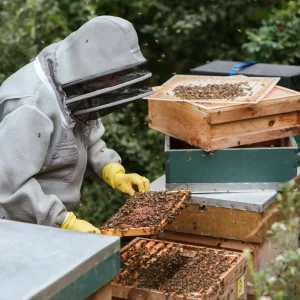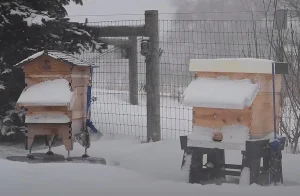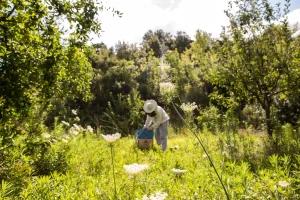In Australia, we have two categories of bees – native and honey bees. Australian native bees don’t store nectar, and many cannot produce honey in large volumes. We have over 2,000 species of native bees in Australia that contribute to pollinating wildflowers, native plants, and crops. Over 200 years ago, European honey bees were introduced to our ecosystem to create honey.
In this post, we’ll outline the three types of honey bees within a hive and the distinct roles they play.
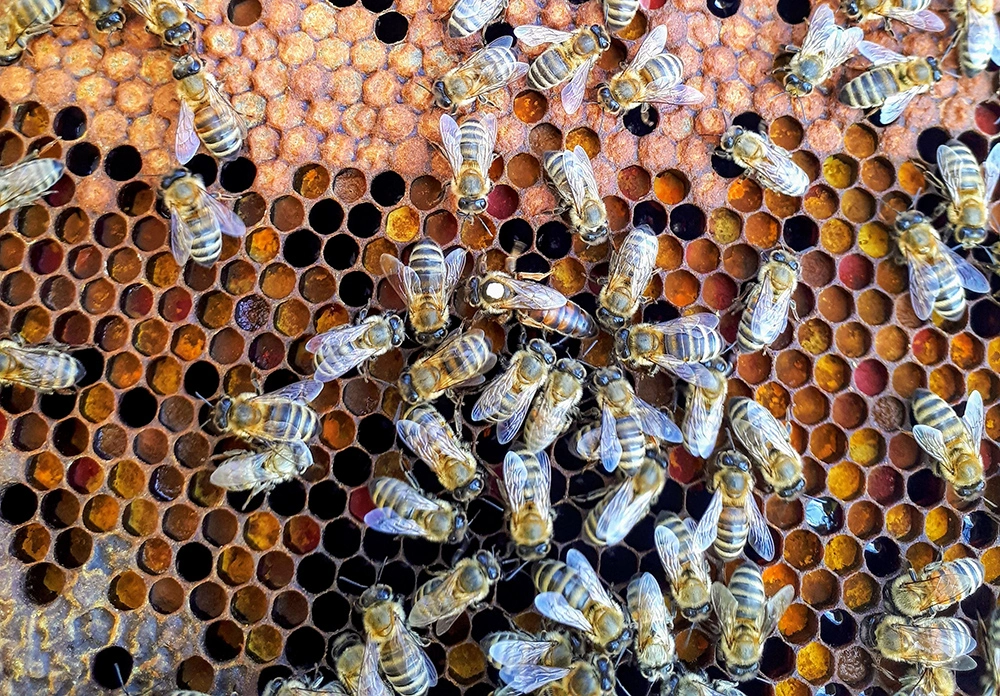
Queen Bees
The queen bee is the life force of a hive. A queen bee is larger than drones and worker bees and often has a more prominent abdomen. You’ll also notice that bees in the hive surround the queen making it easy to identify her.
The primary role of the queen bee is to reproduce – queens lay all of the eggs for the hive. Queen bees also regulate the colony by emitting a chemical scent known as pheromones. This scent will signal to worker bees if a new queen is needed or if the queen’s health is intact and, therefore, the hive.
A queen bee will lay two types of eggs – fertilised and unfertilised. Fertilised eggs hatch worker bees, and unfertilised eggs create drones. The queen must mate and lay eggs to create worker bees, ultimately ensuring a colony’s success.
To mate, queens will leave the hive within a few days of hatching and travel to drone congregation areas to mate (you can read more about this below). Queen bees can take up to three mating flights; once they have finished mating, the queen will remain in the hive until their death.
If a queen bee dies, worker bees will be alerted by the lack of pheromones in the hive. Worker bees will then create queen cells, and eggs containing potential queens are fed royal jelly, eventually producing a queen. The first queen to emerge will remove its competition by stinging potential unborn queens to death in their cells. Queen bees can sting multiple times without dying, unlike worker bees, but will reserve stinging only for other queen bees.
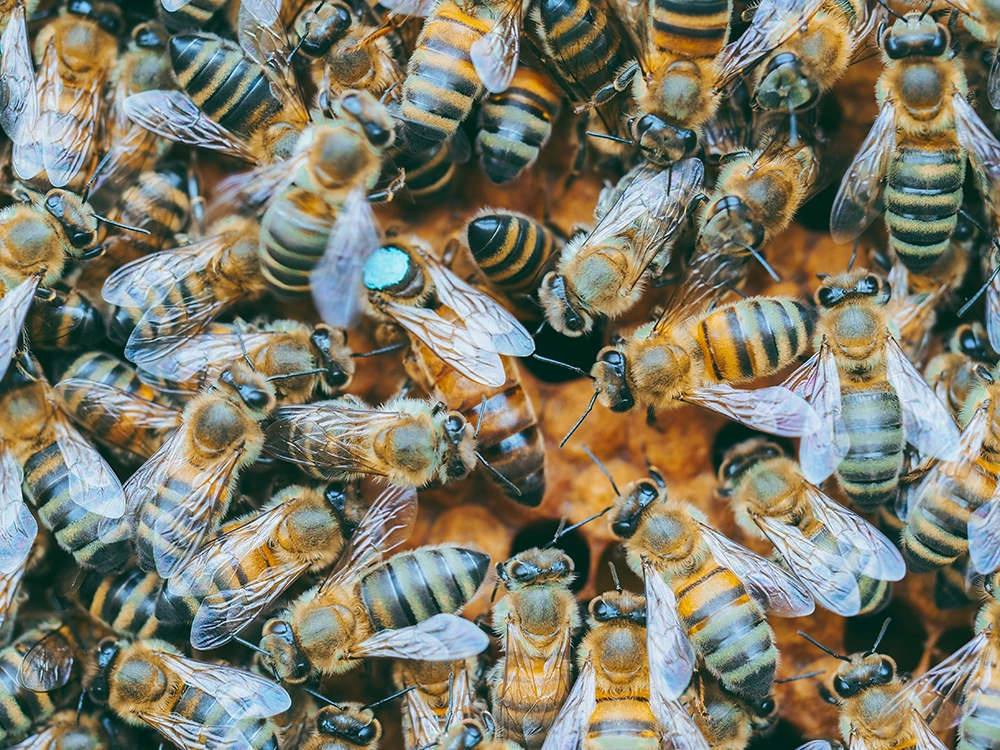
Drones
Drone bees are the only males in a hive whose primary role is to mate with the queen bee. This type of bee makes up approx. 15% of the colony’s population and are born from unfertilised eggs laid by queens. This only occurs when a hive is healthy and has copious amounts of food.
Once matured, Drones leave the hive and travel to high locations known as ‘drone congregation areas’ where they wait to mate with queen bees. If their mating is successful, the drone will die. Unsuccessful drones return to their hives and are fed by worker bees until the end of summer.
Drones are then pushed out of the hive so all food is reserved for the queen and the worker bees that will feed and protect the queen during winter. Drone bees don’t survive past spring.
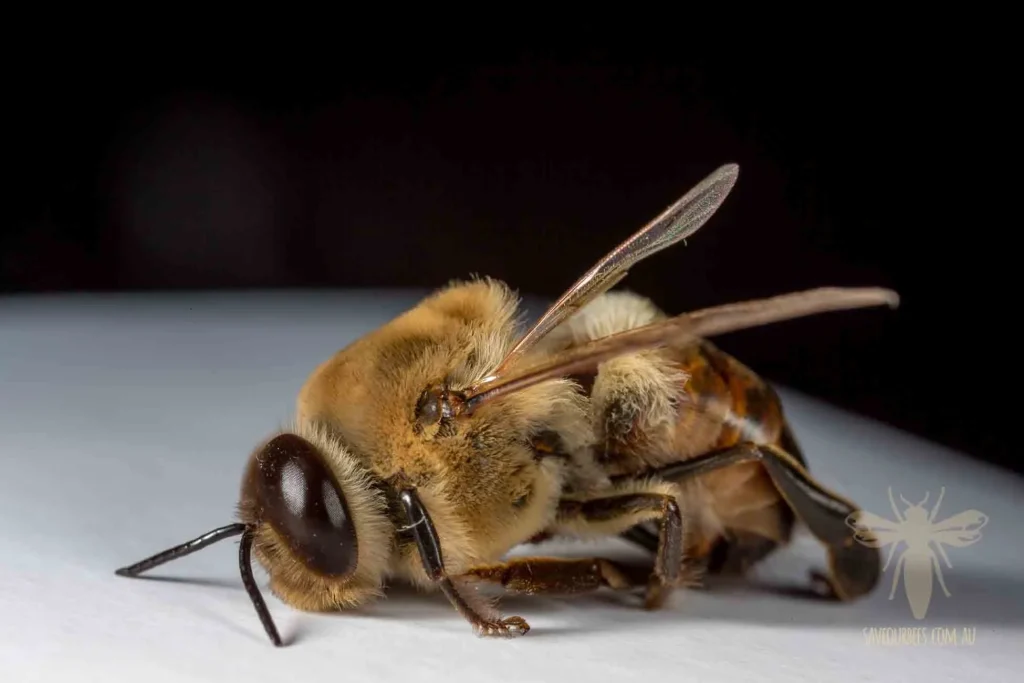
Worker Bees
Worker bees represent 80% – 99% of a colony’s population. While all worker bees are female, they don’t reproduce or lay eggs. The role of a worker bee is varied, and there are more than a dozen roles a worker bee could take on. During their 5–7-week lifespan, worker bees’ roles change based on their age and the evolution of their hive. The different jobs worker bees can take on include:
- Cleaning
- Nursing
- Attending to the queen bee
- Creating honeycomb
- Receiving pollen and nectar
- Pollen packing
- Nectar ripening
- Comb capping
- Hive repair
- Ventilation and temperature regulation
- Dead bee removal
- Guarding
- Foraging
- Foraging for new sites
For the first 15 days of a worker bee’s life, they will stay inside the hive, tending to tasks. Usually, one of their first jobs is attending to the queen. After 12 days, the bees’ wax-producing glands will fully develop, and they could move onto roles involving comb production or food storage. As the worker bees age, their hormone levels will change and transition their bodies to be suitable for life outside the beehive. Once this happens, they may take up roles such as guarding and foraging. The specific needs of a worker bee will be influenced by the hive’s external and internal conditions.
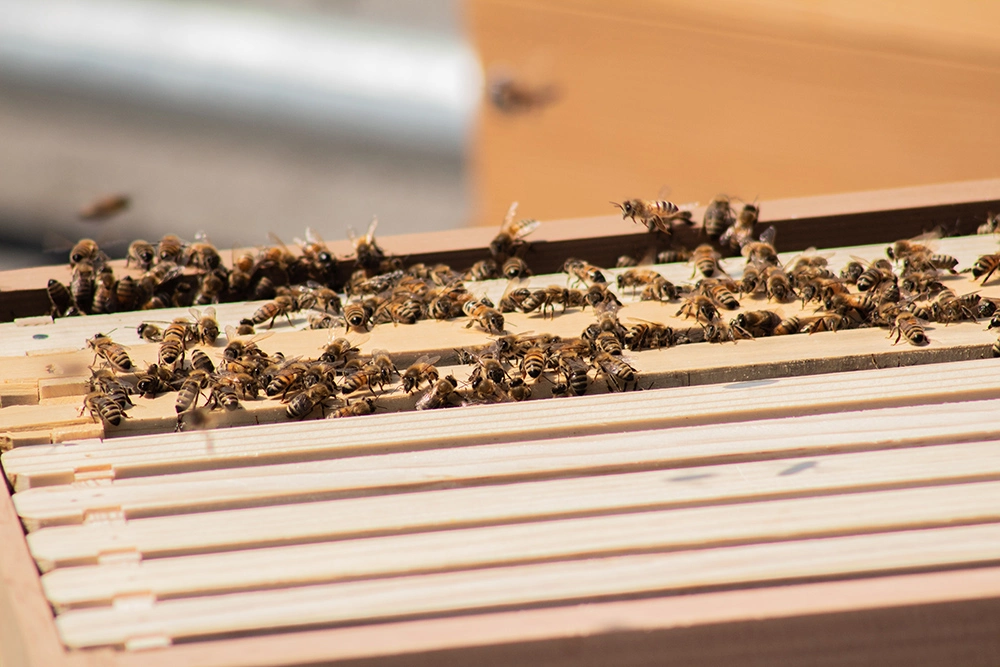
At Ian Barker Gardens, we are fast learning about the different types of bees and their role in a hive as we foster and nurture our brand-new Flow Hives. If you’re a beginner to beekeeping, we couldn’t recommend the Flow Hive more – they take the complexity out of building a hive and also have a great online course to set you up for success. Head to the Flow website to learn more about Flow’s products and educational courses.
